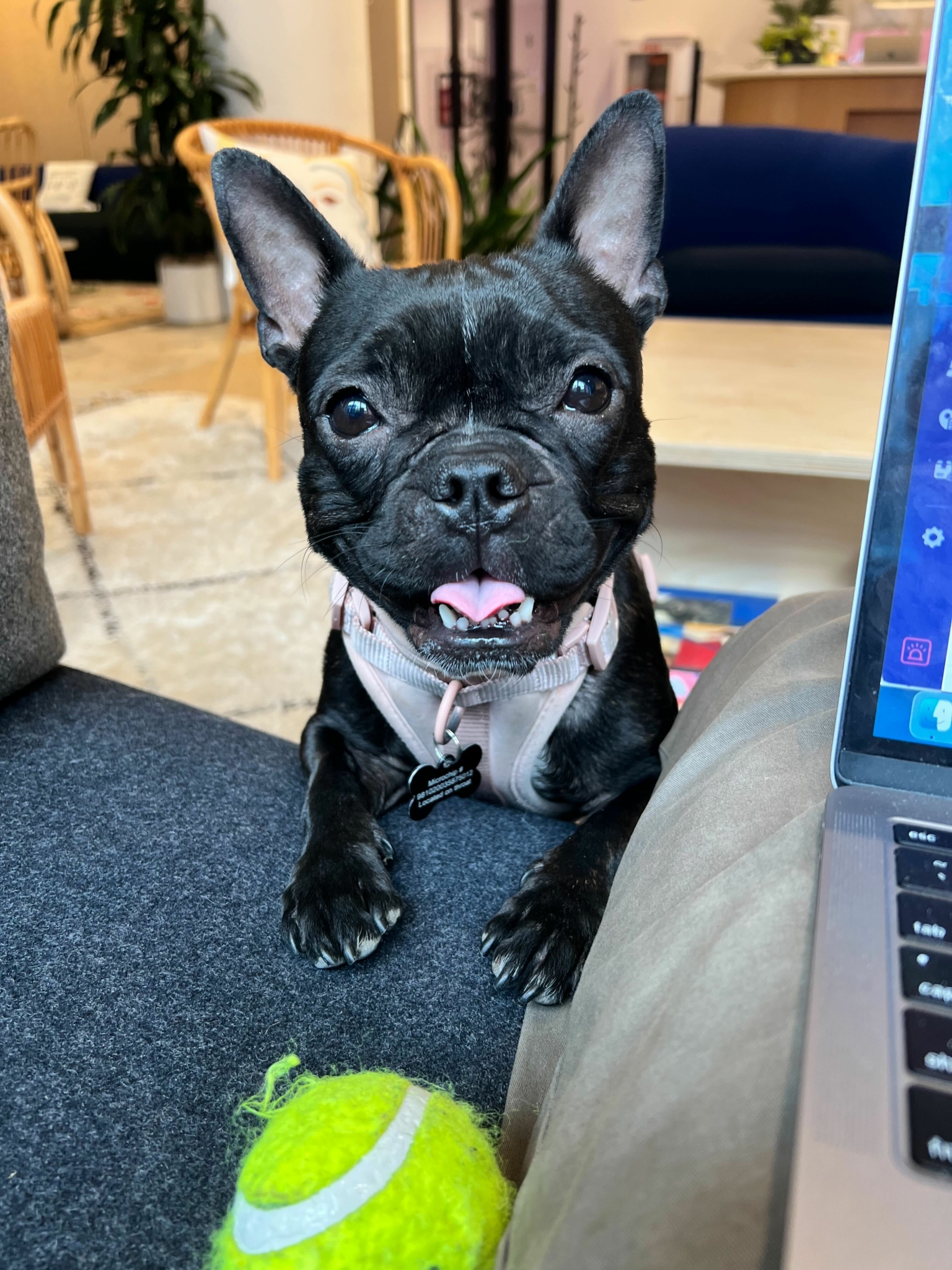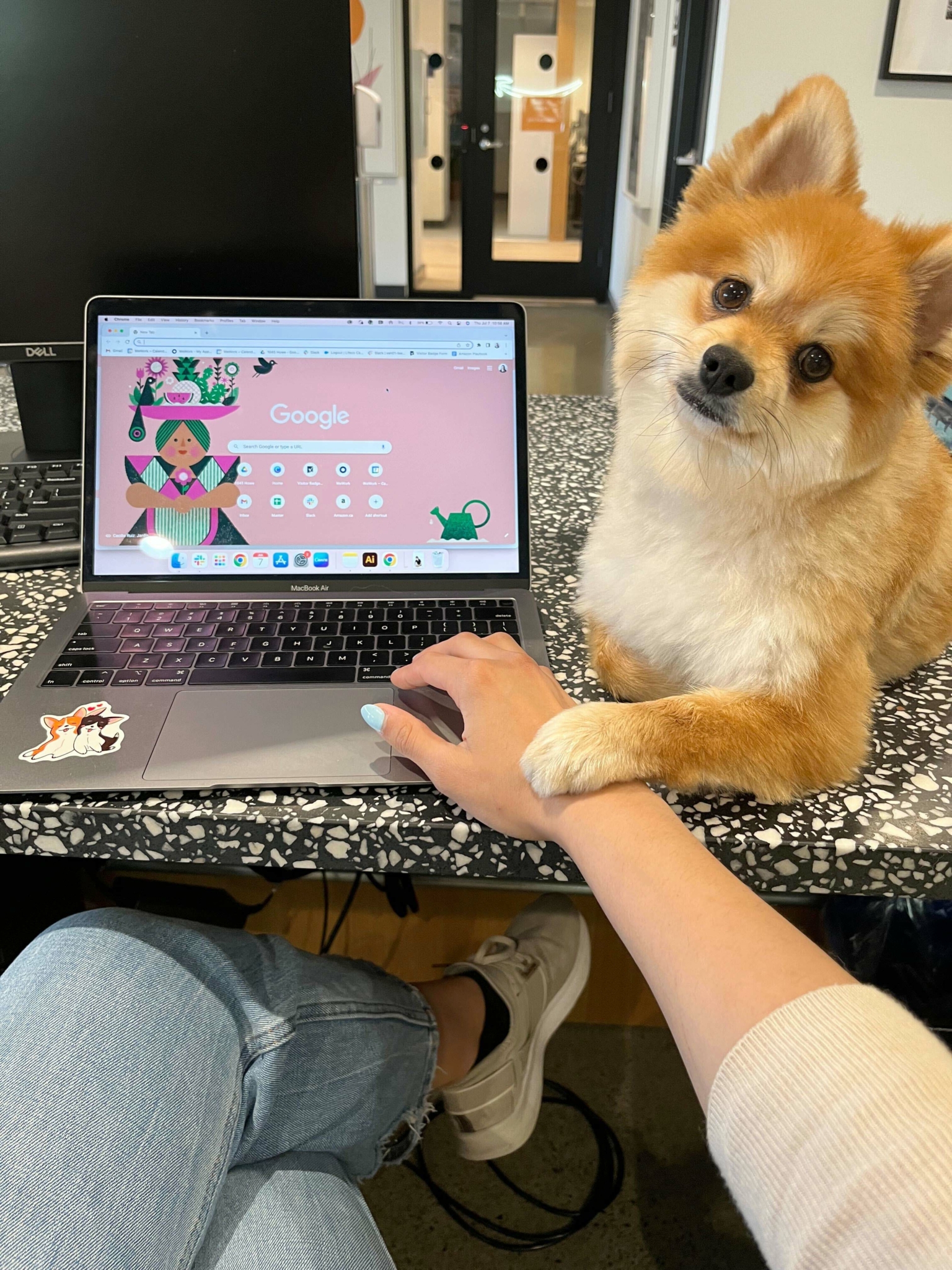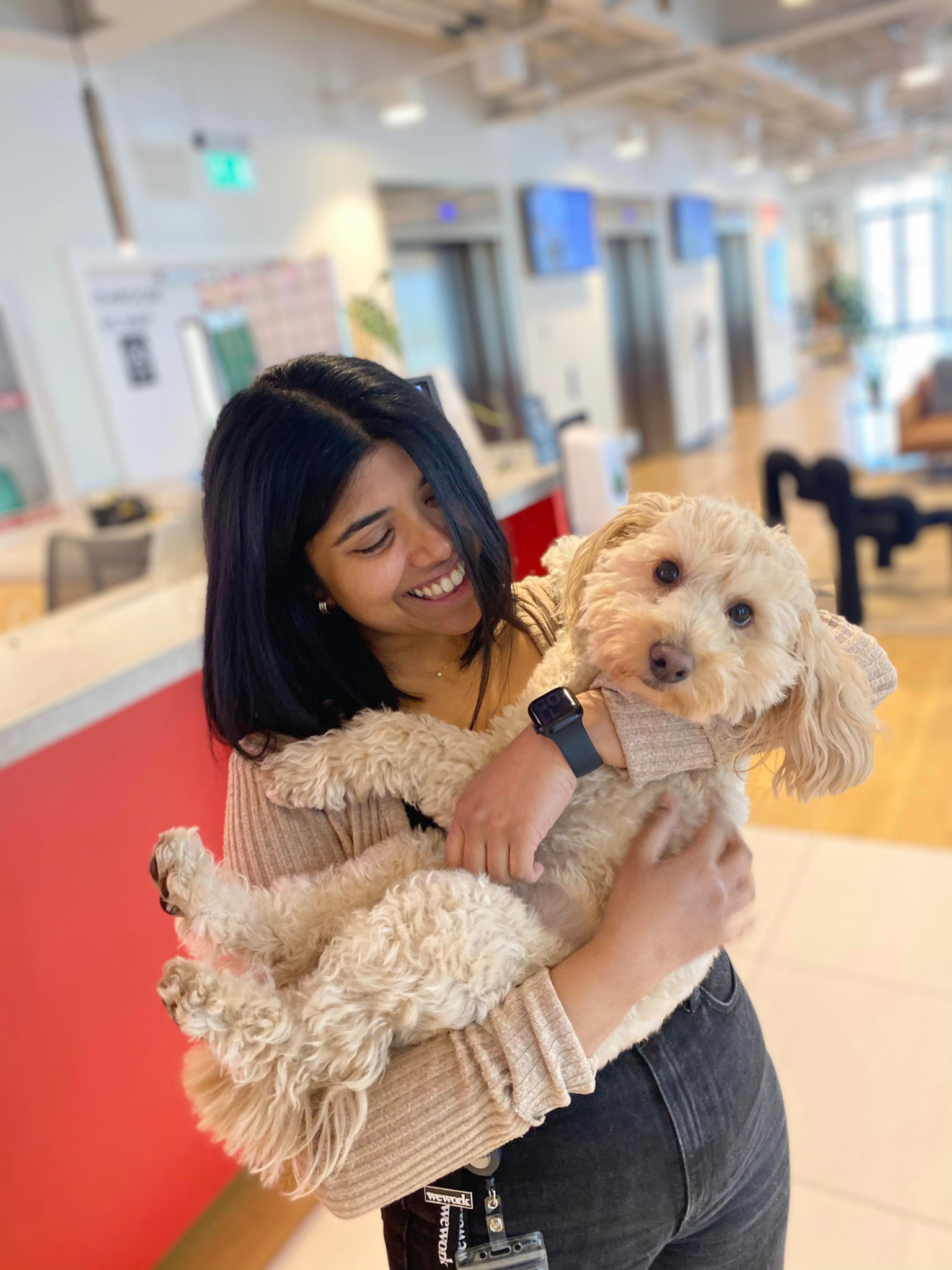This article originally appeared on WeWork x Dogs Trust.
Whether your dog has been your home-office companion for years, or you’re considering bringing your pup into WeWork’s office space, it’s crucial that both you and your pooch are prepared, so the experience will be comfortable for everyone.
A considerate colleague is the best kind. Not all dogs will be suited to office life, but if you think your pup would like to join you at work, you can begin by preparing your dog at home in order to make the transition as stress-free as possible for them. Dogs Trust is a proud WeWork partner, providing WeWork members and employees access to information, including useful training tips and fun activities for you and your pooch in the UK and Ireland.
Most WeWork locations across the world are dog-friendly. In the UK and Ireland, all dog-friendly buildings are equipped with dog refreshment stations, which include water bowls and dog-safe treats, as well as poo bags. With the right guidance, your pup will be named employee of the month in no time. Here are some tips on bringing your dog to the workplace:
1. Basic training and health
A great canine colleague starts their training at home. Some useful skills for your dog to know before entering the workplace are sitting or lying down when asked, settling when you can’t give them attention, and being able to “leave it.” These skill refreshers can all be found in the Training Essentials section.

Another important consideration before bringing your pup into the office is making sure they are up to date on all their vaccinations and deworming and flea and tick treatments. If you’re not sure, contact your vet. Check what proof your workplace will require, and also check if your dog has third-party insurance to cover you in case they cause any damage.
2. Getting to know strangers
If your dog gets overly excited when greeting people, they would benefit from learning a calmer response so that they don’t overdo it when they eventually come into the workplace. You can start by training them in your home, and later while out and about on familiar walks. Reward your dog for calm behavior when they greet people, and if it’s safe to do so, ask your guests to ignore and turn away from your dog if they jump up or get too excited when greeting. They can reward your dog with attention as soon as they show calm behavior, with all four paws on the ground. Your dog will soon learn that calm greetings, free from jumping up or barking, elicit that precious reward of attention, and it will become their go-to response when meeting new people.
3. Introduce the commute
Think about how you normally get to work. Do you walk, use your car, or take public transport? Is your dog familiar and comfortable with the method and the length of the journey? It’s important that your dog is relaxed, not only at your office but also during the commute. If your dog is not already confident with the method of travel, as well as the time of travel (rush hour, anyone?), you may need to begin taking them out, little by little, to help them feel comfortable with your route to work. Try short walks, car journeys, or trips on public transport on the weekend when it’s less busy. If possible, try traveling at quieter times of the day and build up to longer and busier journeys. Develop positive associations with traveling to work, and reward them for showing calm behaviors on the journey.
4. Prepare your workspace

The next step is to prepare your workspace for your dog’s arrival. Consider the layout of your working area. Does your dog have somewhere to settle comfortably in a safe and quiet space where they won’t be disturbed? If your usual desk is close to a busy area with lots of foot traffic, can you move to a quieter area, like near a corner or close to a wall? Is the area hazard-free? Have you removed or covered all wires and items that your dog might be tempted to chew on or get tangled up in? Is there appropriate (nonslip) flooring? If not, can you bring in a nonslip mat? Do you have a safe place to put your dog’s bed, enrichment toys, or water and food where they won’t become a trip hazard to other employees or people in your workplace, and away from any fellow canine colleagues?
5. Inform your colleagues
We all need to work in harmony. Make sure to have clear and open lines of communication with your colleagues and establish agreements in advance, discussing how you will work together when your pup is present. Some things to think about might be:
- Are your colleagues happy to have dogs at work?
- Do you need to avoid anyone who has an allergy to dogs?
- Does everyone understand your dog’s needs and boundaries?
- Will colleagues be tolerant of the occasional bark or a little mess? Accidents sometimes happen!
- If your dog has any food allergies or intolerances, make sure your colleagues know about these, as well as what foods and substances are generally dangerous for dogs. Consider posting a sign at your desk to remind your colleagues not to disturb your dog, and ask them to ensure their lunches and other food items are locked away.
6. Gradual introductions to the workplace
Introducing your dog to your workplace is best done gradually, and always with your dog on a lead, to avoid your dog becoming overwhelmed. You could start by bringing them in for some half-days, if possible, before trying to bring them in one or two full days spread throughout the week. If your dog seems comfortable and relaxed, start to gradually increase the number of days you bring them in during the week, until they are completely familiar with your office and routine and show signs that they are fully relaxed in their new space. We want your pooch to associate the office with positive things.
Good signs include:
- Settling quickly in an appropriate area
- Not barking or whining
- Being mildly inquisitive of, but not upset or excited by, noises and movements around them
7. Increase days at work (and watch for signs of frustration or anxiety)
When you think your dog is ready, you can try gradually increasing the number of days they join you in the workplace and seeing how they react. Remember, your dog might cope very well on Monday and Tuesday, but by Wednesday they might become fed up or a little overwhelmed, meaning that Thursday or Friday might be too much for them to cope with. Make sure they are coping well and not showing signs of anxiety or frustration while at work. Have an exit strategy planned if your dog needs to leave the office, and have care in place for the days you don’t bring them in.
8. Establish a routine

Once you have successfully completed all of these steps with your dog and they are relaxed and happy, you can enjoy their wonderful companionship at work. Remember to establish a routine for toilet breaks to help your dog stay settled and enjoy their time with you. It’s also a great excuse to pop outside for some fresh air. If other dogs share the workplace, make sure they are introduced carefully and calmly. Be sure to have a backup plan if anything goes wrong. Can someone at work care for your dog if you need to step into an important meeting where they can’t join you? If your dog appears to be distressed or sick, can you leave work to take them home?
Dr. Jenna Kiddie is head of canine behavior and training at Dogs Trust. She completed a Senior Clinical Training Scholarship in Cat Behavior and Welfare at Bristol Veterinary School, funded by Cats Protection. Kiddie also has a PhD in the assessment of kenneled dog quality of life from the Royal Veterinary College, funded by Dogs Trust. She worked as an Education Officer with the Scottish SPCA and as a Scientific Officer for the RSPCA’s Companion Animal Department. Kiddie is also a Teaching Fellow at the Royal (Dick) School of Veterinary Studies, University of Edinburgh, a visiting Research Fellow at the University of Cumbria, a freelance animal behavior and welfare consultant, and was previously Senior Lecturer in Animal Behavior and Welfare at Anglia Ruskin University, where she was also chair of the animal and environmental biology research ethics panel.
Rethinking your workspace?










